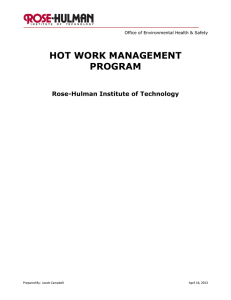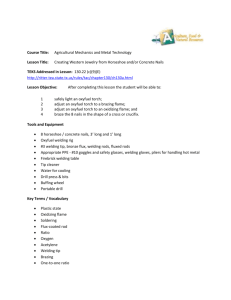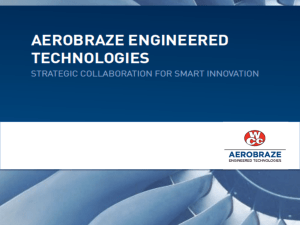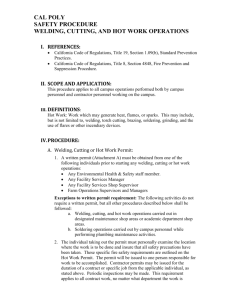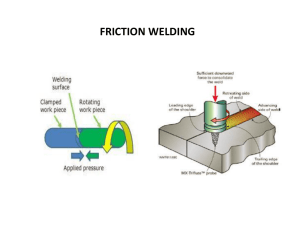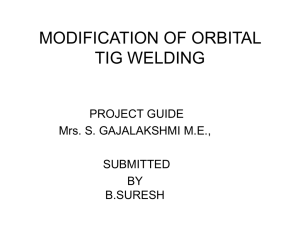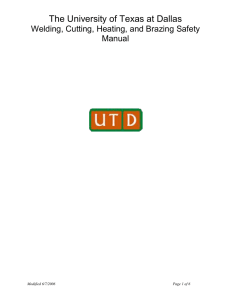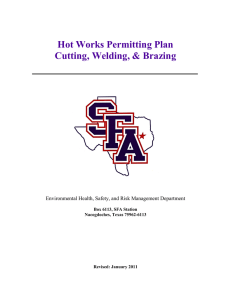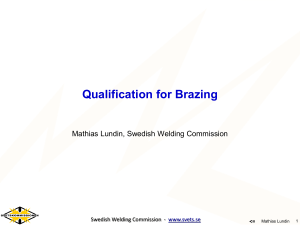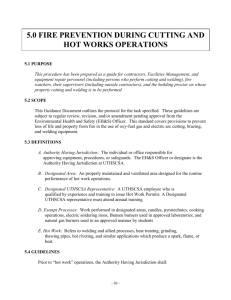Standard 29 CFR Part 1910.251-254
advertisement
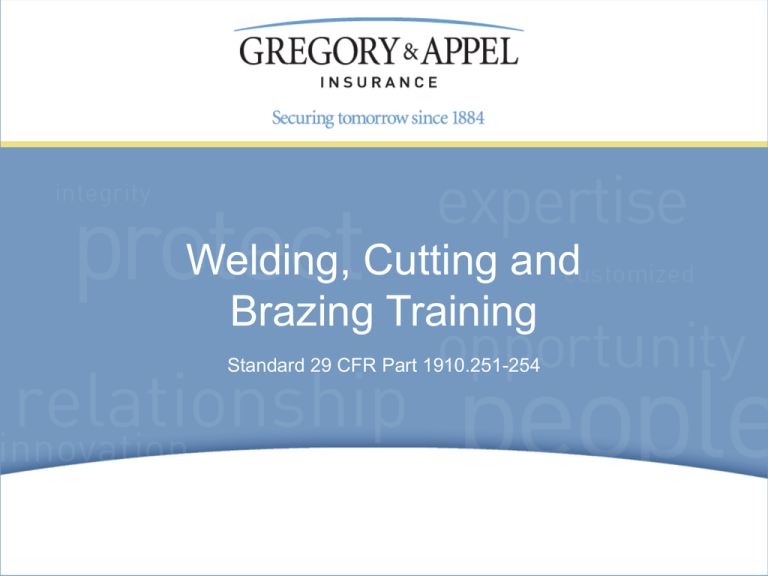
Welding, Cutting and Brazing Training Standard 29 CFR Part 1910.251-254 Today’s agenda • Introduction • Hazards of welding, cutting and brazing • General safety procedures • Gas welding, cutting and brazing • Electric welding, cutting and brazing • Conclusion What are welding, cutting and brazing? Welding, cutting and brazing are methods of joining similar and dissimilar metals by melting the base metals together or by joining them through the use of filler metals. Workplace hazards • • • Fire: Sparks, slag, flames and heat can cause accidental fires. Often the sparks and slag can spatter over 25 feet. Heat can be conducted through pipes, ducts to different rooms and even building floors to start fires. Burns: Contact with hot equipment or materials is always a possibility Explosion: The fuel gasses can explode when ignited in a closed space. Oxygen can cause flammable and combustible liquids to burn with explosive force. Workplace hazards • Dangerous fume and gas: These operations create metal fume which can be hazardous. Often inert gasses are used (such as argon or nitrogen); these gasses are asphyxiates. • Electric shock: When doing any electric welding, cutting or brazing, there is a possibility of coming in contact with high voltage welding leads, supply current power leads or miscellaneous power tool cords. General safety: Fire prevention Welding, cutting and brazing must be conducted in fire safe areas. The only fire safe areas are: Designated areas: An enclosure or dedicated area installed and maintained for hot work. Designated areas will be free of combustible and flammable materials and will be designed to prevent sparks, slag and heat from spreading to other areas. Hot Work Permit: A Hot Work Permit is a procedure that is followed to prepare an area for a temporary hot work job. Flammable and combustible materials are moved out, openings to other rooms or floors are plugged, and fire watch is provided. A FIRE EXTINGUISHER MUST ALWAYS BE PRESENT WHEN PERFORMING HOT WORK General safety: PPE • • • • • Eye protection is always required to protect against flying particles and harmful rays Face protection is often required, especially for electric welding Your job has been evaluated to determine requirements for flame retardant clothing and we will discuss those requirements now Hand protection is always required No shorts are permitted and a shirt covering the shoulder is permitted (long sleeve shirts are strongly encouraged) PRECAUTIONS MUST BE TAKEN TO PROTECT OTHERS IN THE AREA FROM HARMFUL RAYS OR HOT OBJECTS General safety: Ventilation Ventilation: Areas where hot work is performed must have one of the following: Natural ventilation – area must have high ceilings and good natural draft, through windows or other air passages Mechanical ventilation - fans or other powered air movers that provide exhaust or fresh air make-up to the area MECHANICAL VENTILATION IS ALWAYS REQUIRED WHEN WORKING WITH ACUTELY TOXIC METALS SUCH AS LEAD OR CADMIUM, OR WHEN WORKING IN A CONFINED SPACE Safety: Gas • • • • • • • Cylinders contain extreme pneumatic pressure, often in excess of 2,000 psig. Extreme care must be taken not to drop, forcibly strike or otherwise compromise the cylinder Cylinders are heavy and awkward, always use a cylinder cart When transporting cylinders, the cap must be in place Fuel gas must be separated from oxygen, except when in use with a torch set Oxygen accelerates burning: never allow oxygen to come in contact with flammable liquids or combustible material Always inspect torches, hoses and regulators prior to use to ensure good condition Check to be sure that check valves and flash back preventers are in line to prevent accidental mixing of gas in the hose or cylinders Safety: Electric welding, cutting and brazing • • • • • • Inspect all power cords and leads for intact insulation and connectors Check all connectors to be sure that they are tight Route cable out of wet areas and be sure that workers will not be standing in water. Keep cables out of walk ways to prevent trips and falls Never coil or loop cable around your body, uncoil cables and position them on the working surface Be sure that ground is established with a true “earth” ground, structural steel, a water main, etc. Attach the ground lead to the work piece, or as close as possible to it Conclusion Welding, cutting and brazing are potentially hazardous undertakings. Persons who practice these crafts must remember that fires and injuries are always possible. Skilled workers follow the rules and stay tuned into the work area thereby preventing accidents. For more information For more information regarding welding, cutting and brazing safety or other safety issues please contact: Gregory & Appel Insurance Mike Salazar, Vice President Direct: 317-686-6407 Email: msalazar@gregoryappel.com
